Disclosure: This article contains affiliate links. We may earn a commission from purchases at no extra cost to you, which helps our travel content.
The first time I navigated between Bilbao and San Sebastian, I was armed with nothing but a dog-eared map and broken Spanish phrases from my childhood. Twenty years and countless Basque Country visits later, I've perfected the art of traversing this stunning 100-kilometer stretch of northern Spain. Whether you're drawn to Bilbao's industrial-chic transformation and the gleaming curves of the Guggenheim, or San Sebastian's perfect crescent beaches and world-class pintxo scene, the journey between these two Basque jewels is as rewarding as the destinations themselves. From budget-friendly bus connections to scenic coastal drives that will have you pulling over every fifteen minutes for another jaw-dropping photo, I'll walk you through every transportation option with the practical details that guidebooks often miss. Consider this your road map to the soul of Basque Country, where each journey becomes part of the story.
Bus Connections: The Budget Traveler's Best Friend
If there's one thing I've learned from my years crisscrossing the Basque Country, it's that the regional bus network deserves far more credit than it typically receives. The PESA and ALSA bus services connecting Bilbao and San Sebastian are nothing short of remarkable for solo travelers watching their euros.
The journey takes approximately 1 hour and 15 minutes on the direct express services, with buses departing hourly from early morning until late evening. What continually impresses me is the punctuality – a refreshing departure from some of Spain's more relaxed transportation timetables. Tickets hover around €7-8 one-way, making this by far the most economical option.
The buses themselves offer surprising comfort. The PESA coaches feature reclining seats, air conditioning that actually works (a blessing during those unexpected Basque heatwaves), and free WiFi that's reliable enough to upload your Guggenheim photos to Instagram. Most buses also offer USB charging ports at each seat – perfect for keeping your portable charger topped up for the next leg of your journey.
I particularly recommend grabbing a seat on the right side when traveling from Bilbao to San Sebastian (or left when going the opposite direction) to catch glimpses of the coastline. While the highway doesn't hug the shore the entire way, there are several stretches where the Cantabrian Sea unfolds dramatically below.
Tickets can be purchased online through the PESA or ALSA websites, but I've never had trouble buying them at the station just before departure except during peak summer weekends or local holidays. Both cities' bus stations are centrally located and well-connected to local transportation networks.
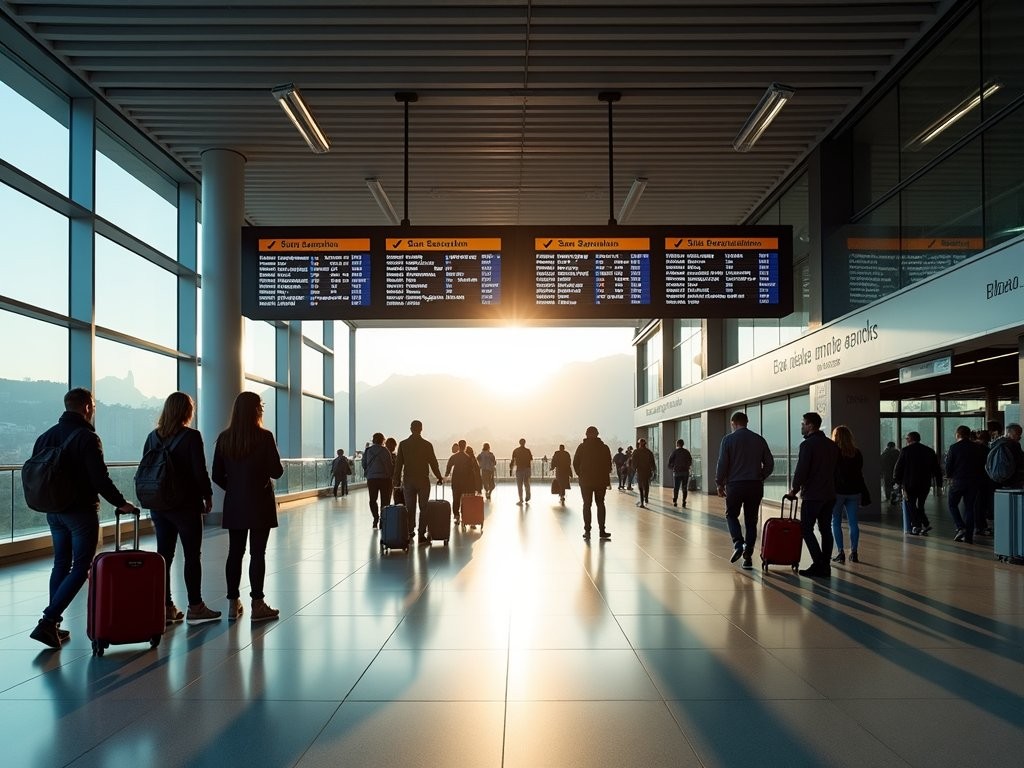
💡 Pro Tips
- Buy bus tickets online during summer high season to guarantee your seat
- Arrive 15 minutes early as boarding closes promptly
- Buses labeled 'Directo' skip small towns, saving 20-30 minutes of travel time
Train Travel: Comfort with a View
The Euskotren narrow-gauge railway connecting Bilbao and San Sebastian offers what might be the most scenic public transportation option between these cities, albeit with a significant time trade-off. Unlike the direct buses, the train journey takes approximately 2.5-3 hours and requires a transfer in Amara station.
What the train lacks in speed, it more than makes up for in views. The route meanders through the lush Basque countryside, passing through charming fishing villages and offering spectacular glimpses of the rugged coastline that you simply won't see from the highway. The section between Deba and Zumaia in particular has been featured in numerous films and television shows (most notably as Dragonstone in Game of Thrones) for its dramatic flysch formations.
Tickets cost around €7-8 each way – comparable to the bus but with twice the journey time. For photography enthusiasts like myself, this is time well spent. I never board without my camera cleaning kit to ensure my lens is spotless for those fleeting coastal shots through the window.
The trains themselves are modern, clean, and equipped with comfortable seating, though amenities are more basic than on long-distance trains – there's no café car or WiFi. The real luxury here is the panoramic windows and the rhythm of the journey itself.
One particularly appealing aspect of the train option is that both the Bilbao (Atxuri station) and San Sebastian (Amara station) terminals are located closer to the old towns than their respective bus stations. This can save you additional local transportation costs upon arrival.

💡 Pro Tips
- Download the Euskotren app for real-time schedules and platform updates
- Sit on the right side (Bilbao to San Sebastian) for the best coastal views
- Consider breaking your journey in Zumaia to explore the famous flysch formations
Driving the Coastal Route: The Photographer's Dream
If time flexibility and photographic opportunities rank high on your priority list, renting a car and taking the coastal route between Bilbao and San Sebastian might just be the highlight of your Basque Country adventure. I've driven this route dozens of times, and it never fails to leave me breathless.
While the direct AP-8 motorway will get you from city to city in just over an hour, I strongly recommend taking the longer BI-631 and N-634 coastal roads, which transform the journey into a day-long expedition through some of Spain's most spectacular landscapes.
The route takes you through the UNESCO Urdaibai Biosphere Reserve, where the Mundaka estuary creates an ever-changing canvas of colors as the tide ebbs and flows. Further along, the fishing village of Lekeitio offers the perfect lunch stop with its picturesque harbor and the walkable island of San Nicolás (accessible only at low tide).
Perhaps the most photogenic stretch comes as you approach Zumaia, where the Flysch Route reveals millions of years of geological history in dramatic cliff formations. I typically pack my travel tripod for these stops – the stability is essential for capturing the intricate details of the layered rock formations, especially in the golden hour light.
Rental cars are readily available at Bilbao Airport or in the city centers of both Bilbao and San Sebastian. Expect to pay around €40-70 per day depending on the season and vehicle type. Parking can be challenging and expensive in both cities (particularly San Sebastian), so I recommend using peripheral parking lots and public transportation once you've reached your destination.
The coastal drive, while only about 100km in total, can easily consume an entire day if you make the most of the stops along the way – and trust me, you'll want to.

💡 Pro Tips
- Fill up on gas before leaving the cities as stations are sparse along the coastal route
- Download offline Google Maps or use a GPS as cell service can be spotty in remote coastal areas
- Visit Getaria for the best grilled fish in the region – the perfect midway lunch stop
BlaBlaCar: The Social Option
For solo travelers seeking both economy and local connection, BlaBlaCar has become my secret weapon for traversing the Basque Country. This ridesharing platform connects drivers who have empty seats with passengers heading in the same direction, creating a win-win of shared costs and cultural exchange.
The Bilbao-San Sebastian route is particularly active on BlaBlaCar, with dozens of rides offered daily at various times. The journey typically costs between €5-10, making it competitive with bus prices but often with the advantage of door-to-door service rather than station-to-station.
Beyond the practical benefits, BlaBlaCar offers something buses and trains simply cannot – authentic local interaction. Some of my most insightful conversations about Basque culture, politics, and hidden local spots have happened during these shared rides. Just last year, a ride with a local chef led me to a tiny, unmarked asador in the hills outside San Sebastian that I never would have discovered otherwise.
The platform's verification system, reviews, and profiles help ensure safety and compatibility. I always look for drivers with numerous positive reviews and complete profiles. As a solo female traveler, I occasionally opt for female drivers when traveling alone, though I've never experienced any safety issues in all my years using the service in Spain.
The one downside is that schedules can be less predictable than commercial transportation, and last-minute cancellations do occur. For this reason, I wouldn't recommend relying on BlaBlaCar if you have a tight schedule or early morning flight to catch.
Before using BlaBlaCar in Spain, download the app and set up your profile completely, including a photo and brief bio. Spanish users typically appreciate knowing a bit about who they'll be sharing their car with. A few basic Spanish phrases go a long way, though many Basque Country residents speak excellent English.
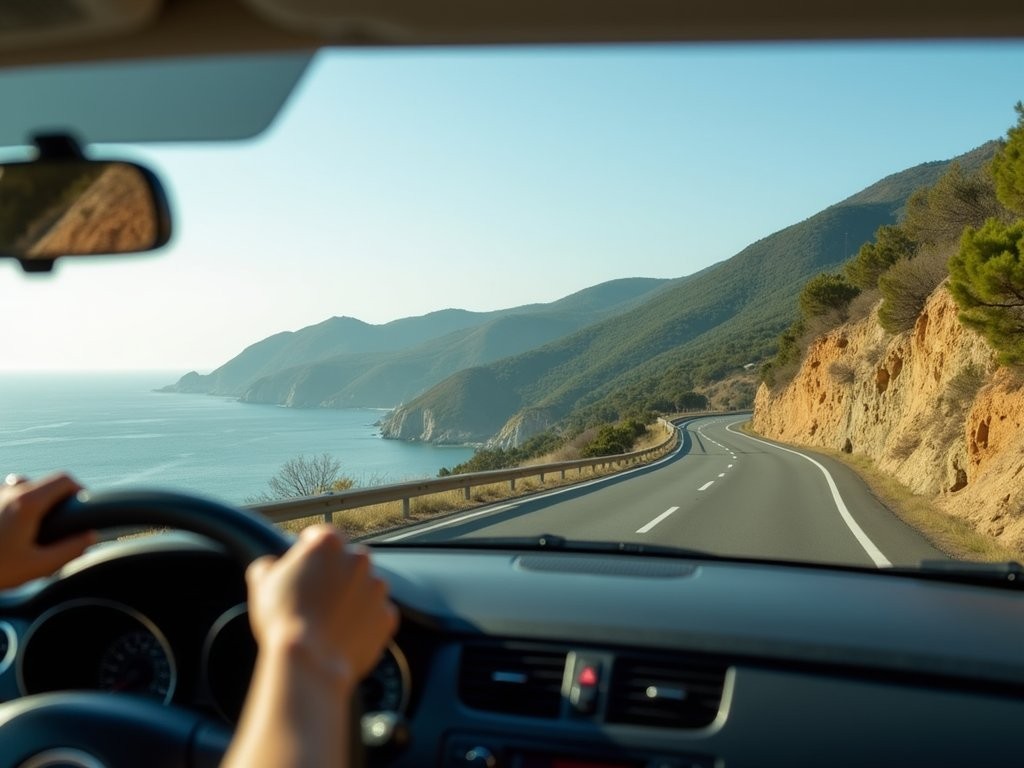
💡 Pro Tips
- Book 1-2 days in advance for the best selection of rides
- Message the driver before booking to confirm exact pickup/dropoff locations
- Check if the driver plans to take the coastal route or highway if scenery is important to you
Cycling for the Adventurous
For those with strong legs and an adventurous spirit, cycling between Bilbao and San Sebastian offers an unforgettable journey through the heart of Basque Country. This isn't a route I'd recommend for casual cyclists – the approximately 100km distance combined with significant elevation changes demands proper preparation and equipment.
The most rewarding route follows the EuroVelo 1 Atlantic Coast Route, which is partially completed through the Basque Country. While not entirely on dedicated cycling paths, it utilizes secondary roads with lighter traffic and offers strategic connections to some of the region's most spectacular coastal sections.
My personal favorite segment runs from Deba to Zumaia along a converted railway line, now a perfectly graded cycling path with tunnels and bridges offering extraordinary coastal perspectives that even car travelers miss. This section forms part of the longer Coastal Route (GR-121), which serious cyclists can follow for much of the journey.
Before undertaking this adventure, I strongly recommend investing in proper gear. My cycling panniers have survived countless Basque Country journeys, remaining waterproof through the region's notoriously unpredictable rain showers. The rugged construction has protected my camera equipment even on the bumpier sections of route.
Both Bilbao and San Sebastian offer excellent bicycle rental options, with many shops providing touring bikes properly equipped for multi-day journeys. Expect to pay around €30-40 per day for quality touring bicycles. Many rental companies also offer one-way options (pickup in Bilbao, dropoff in San Sebastian) for an additional fee, typically around €50.
For those who prefer assistance with the region's challenging hills, e-bike rentals have become increasingly available, though at a premium price (€50-70 daily). The battery range is generally sufficient for the entire journey if managed carefully.
The cycling route can be comfortably completed in one long day (6-8 hours of riding) by experienced cyclists, but I recommend breaking it into two days with an overnight in Lekeitio or Deba to fully appreciate the coastal towns along the way.

💡 Pro Tips
- Check weather forecasts carefully – the Cantabrian coast is notorious for rapid weather changes
- Download the Komoot or Wikiloc app for detailed cycling routes with elevation profiles
- Consider shipping your main luggage ahead to your San Sebastian accommodation to cycle with just essentials
Final Thoughts
The journey between Bilbao and San Sebastian represents everything I love about travel – the opportunity to choose your own adventure, whether that's the efficiency of a direct bus, the panoramic leisure of a coastal train, the freedom of a winding road trip, the cultural connection of a shared ride, or the physical challenge of a coastal cycle. Each transportation mode reveals a different facet of the Basque Country's personality, from its dramatic coastlines to its hidden villages. After twenty years of traversing this route, I'm still discovering new perspectives and untold stories along the way. Whatever method you choose, remember that in the Basque Country, the journey itself is a destination worth savoring. Pack your camera, bring your sense of adventure, and allow yourself the flexibility to be captivated by unexpected discoveries. The road between these two magnificent cities holds as many treasures as the endpoints themselves.
✨ Key Takeaways
- Buses offer the most economical and frequent connections (hourly, €7-8, 75 minutes)
- The Euskotren provides spectacular coastal scenery but takes nearly 3 hours with a transfer
- Driving the coastal route allows for stunning photography stops but requires a full day to appreciate
- BlaBlaCar rideshares combine affordability with authentic local connections
- Cycling the route is challenging but rewards with exclusive perspectives of the coastline
📋 Practical Information
Best Time to Visit
year-round, though May-June and September offer ideal weather with fewer crowds
Budget Estimate
€7-70 depending on transportation method chosen
Recommended Duration
1-2 days (allowing for stops along the coastal route)
Difficulty Level
Easy For Public Transport Options, Moderate For Self-Driving, Challenging For Cycling

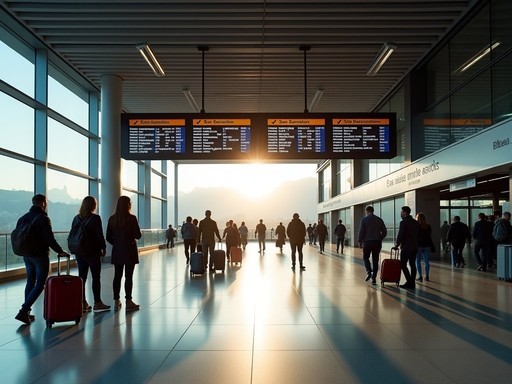










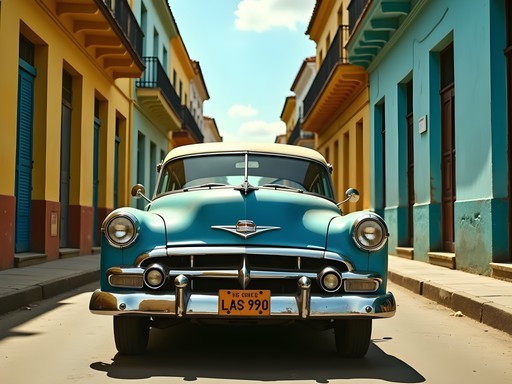

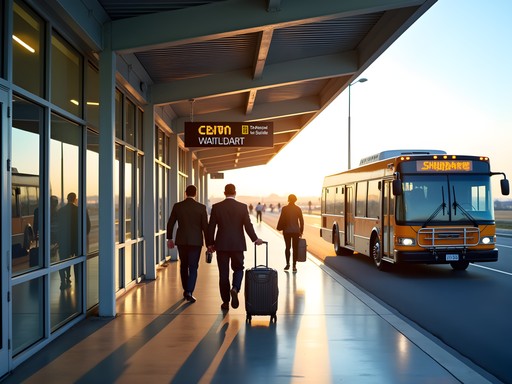

Comments
Sage Dixon
I'm all about that coastal drive! Rented a car last spring and turned the 1-hour journey into a full day adventure. There's a little unmarked viewpoint about halfway between the cities where I caught the most spectacular sunset over the Bay of Biscay. Just look for a small gravel pullout after Zarautz. The train is charming too - sits lower in the valleys so you get a completely different perspective of the landscape. Evelyn, you've captured the essence of Basque travel perfectly here - it really is about the journey as much as the destinations!
starninja1853
Do you remember approximately where that viewpoint is? Planning to drive this route in October and would love to find it!
Sage Dixon
It's about 5 minutes after you pass through Zarautz, on the right side when heading toward San Sebastian. There's a small wooden fence and you might see other cars stopped there on nice days. Can't miss the view!
explorevibes6944
We tried BlaBlaCar between these cities last month and had such a cool experience! Our driver Miguel was a local chef who gave us restaurant recommendations that weren't in any guidebook. Way cheaper than a taxi and we made a friend. The pickup point in Bilbao was a bit confusing though - make sure you confirm exactly where to meet beforehand. Also downloaded the offline maps which was a lifesaver when we lost cell service along the coast.
sunsetzone
Is the bus really reliable? Worried about missing connections!
bluemood
Used the ALSA buses last summer and they were super punctual. Just make sure you're at the station 15 mins early. The buses are comfy too!
Timothy Jenkins
Brilliant guide, Evelyn! I've done this journey multiple times and completely agree that the coastal drive is spectacular. For those considering it, I'd add that stopping at Getaria for lunch is an absolute must - the grilled fish there is unbelievable. One tip: if taking the bus in summer, book a few days ahead as they fill up quickly with tourists. The ALSA website can be a bit finicky with international credit cards, so I always use their app instead.
vacationbuddy
Thanks for the Getaria tip! Adding that to my itinerary now.
Timothy Jenkins
You won't regret it! Try Kaia Kaipe if you can get a reservation. The views alone are worth it.
hikingmaster
Just what I needed! Heading to Basque Country next month and was wondering about getting between these cities.
adventurephotographer
That shot of the winding coastal road is stunning! What time of day was it taken?
Evelyn Rogers
Thank you! I took that around 5pm in late June - the golden hour light along that coastline is magical!
escapeking
Love the photos of the coastal drive! Definitely convinced me to rent a car.
Douglas Bradley
Excellent breakdown of the transportation options, Evelyn. Having analyzed the various modes of transport between these two cities extensively for my own blog, I'd add that the seasonal timing can significantly impact the experience. Summer coastal traffic can add 30+ minutes to drive times, while winter offers empty roads but occasional weather closures. For those considering BlaBlaCar, I found the cultural exchange with locals invaluable - my driver detoured to show me his favorite txakoli winery that no guidebook mentions. One practical note: I used my pocket translator extensively in the smaller coastal towns where English was limited.
coolfan
Thanks for this guide! Bookmarked for my trip next month.
springguy
I'm planning to drive the coastal route next spring! Any specific viewpoints or hidden spots worth stopping at that weren't mentioned in the article? Also curious about parking situation in San Sebastian.
Haley Hamilton
The Getaria lookout point is absolutely worth a stop - incredible views of the vineyard-covered hills meeting the sea. As for parking in San Sebastian, I always use the underground garage near La Concha beach. It's not cheap but super convenient for exploring the old town. Just remember that San Sebastian's streets can get really congested in spring/summer!
Venture X
Premium card with 2X miles, $300 travel credit, Priority Pass